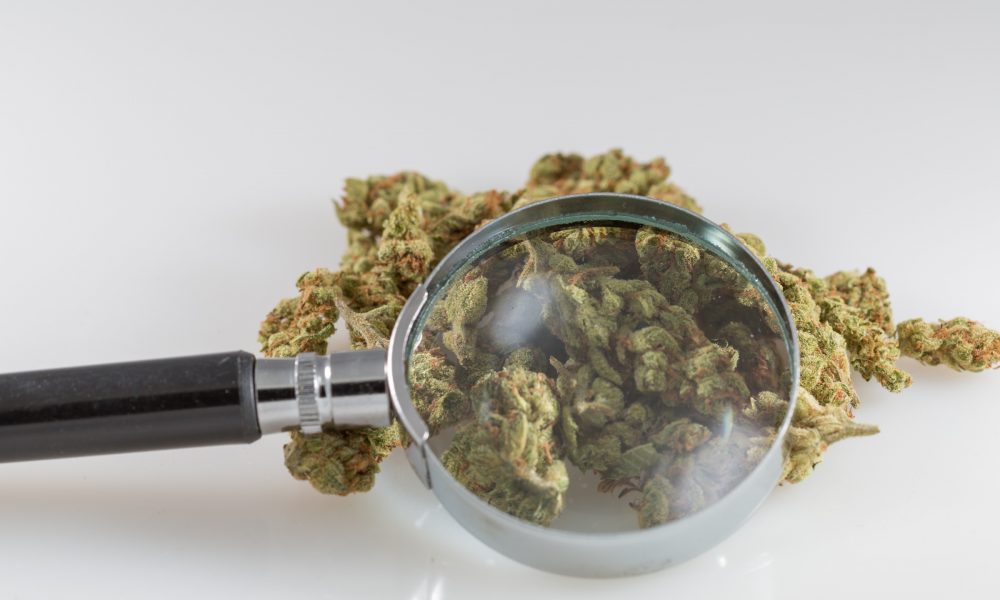The ongoing federal prohibition of marijuana is getting between consumers and safe products, according to a new study resulting from a year-long investigation into the prevalence of various contaminants in lab-tested cannabis.
Looking at disparities in legal states’ approach to contaminants, as well as robust data from samples collected in California, the team helmed by Dr. Maxwell C.K. Leung at Arizona State University concluded that a lack of consistent federal guidelines around marijuana contaminants puts consumers at greater risk of developing health issues.
Since cannabis remains a Schedule I controlled substance, it is not subject to Food and Drug Administration (FDA) or U.S. Department of Agriculture (USDA) regulations that apply to legal consumer products.
That has left states to try to figure out how best to ensure the safety of marijuana products that are sold within their borders.
The new paper, published this month in the Environmental Health Perspectives journal, argues, first and foremost, that “the scattershot approach of regulations at the state level can confuse cannabis manufacturers and discourage compliance while subjecting cannabis users to a higher level of contaminant exposure in some jurisdictions.” It also cautions that “it is unclear whether the health benefit of cannabis usage outweighs the health risk of exposure to cannabis-borne contaminants” that can be present under the current system.
Very excited to announce our latest study, “Comparison of State-Level Regulations for Cannabis Contaminants and Implications for Public Health”, in this month’s issue of Environmental Health Perspectives! @EHPonline @ASUResearch @asu_smns https://t.co/BZcNyQfzwM https://t.co/ZCSIXMrqwo
— Maxwell C. K. Leung, Ph.D. (@Leung_Lab) September 14, 2022
The issue is especially concerning because cannabis products are marketed “as alternative options to standard medical treatments” which means that marijuana “can potentially expose susceptible patients to harmful contaminants; however, there is minimal information about the scale of cannabis use in different patient populations.”
“[T]his study demonstrates the urgent need to mitigate the public health risk of cannabis contamination by introducing national-level guidelines…”
In the course of their study, Leung’s team first examined legal states’ regulations and requirements around cannabis contaminants. They discovered that state health agencies employed a wide range of standards to identify relevant contaminants and their “action levels”—the threshold for a contaminant to become hazardous.
“There was more inconsistency in cannabis-borne contaminant regulation as compared with other agricultural commodities,” they wrote.
Leung’s team noted a total of 679 contaminants regulated by at least one of the 36 states with legal cannabis: 551 pesticides, 74 solvents, 12 inorganic compounds, 21 microbes, 5 fungal toxins and 16 other contaminants.
Yet only 23 of those states regulated all four categories of contaminants: pesticides, inorganics, solvents and microbes/mycotoxins and noted the action level for each contaminant. Only eight states regulated contaminants in one, two or three of those categories.
The team subsequently mined the testing results from 5,654 flower and 3,760 extract samples from a single California testing facility to gauge whether products actually adhere to state guidelines.
NEW RESEARCH: Comparison of State-Level Regulations for Cannabis Contaminants and Implications in Public Health. Read the article ➡️ https://t.co/tJIIryc7xl @asunews @Leung_Lab @ClipLaboratory
— Environmental Health Perspectives (@EHPonline) September 14, 2022
They found that 5.1 percent of all cannabis samples failed testing: 2.3 percent for flower, and a whopping 9.2 percent failure rate for extracts.
Although the paper stops short of offering specific suggestions, it nonetheless highlights “an urgent need for a unified regulatory approach to mitigate the public health risk of cannabis contamination at a national level” and a “national-level guideline on the contaminant regulations of cannabis.”
“In our opinion, this guideline should be based on human health risk assessment methodologies consistent with other agricultural and food commodities,” the authors wrote. “In addition, a more stringent approach is needed to regulate contaminants in medical cannabis to address additional vulnerabilities present in these populations.”
“Given the existing knowledge gaps regarding cannabis contamination toxicity and exposure, this effort would require federal and state support to advance the toxicological and epidemiological research of cannabis-borne contaminants, particularly in susceptible patient populations with medical conditions,” the study concludes.
“With the constraints faced by federal agencies in regulating an illegal Schedule I substance, we think this effort should involve the analytical science community, the medical community, and multi-state trade collaboratives,” it says. “This two-tier approach may provide a science-based solution to mitigate the health hazards of cannabis contaminants in an expanding U.S. cannabis market.”
While marijuana is federally unregulated, agencies have taken steps to mitigate contamination is hemp since the crop was legalized under the 2018 Farm Bill.
For example, the Environmental Protection Agency (EPA) started the rulemaking process in 2019 to authorize the use of certain pesticides for hemp.
And even though marijuana remains restricted under Schedule I, some parts of the federal government are beginning to take steps to acknowledge the widespread availability of the plant and its products under a growing number of state laws.
A federal government handbook on standards for weights and measures is also getting a new section on cannabis potency measurement, packaging, labeling and other issues related to products derived from the plant.
The National Institute of Standards and Technology separately announced in 2020 that it was launching a cannabis testing program that involved inviting labs to participate in a large-scale study to assess their ability to accurately analyze marijuana and hemp samples for their cannabinoid profile and possible contaminants.
Meanwhile, the National Institute on Drug Abuse (NIDA) recently posted a request for applications on creating a medical marijuana registry to track everything from how patients are obtaining and consuming cannabis to their health outcomes. It’s part of an overall objective to develop data standardization that could be used to “inform research, policy, and clinical recommendation practices on medicinal cannabis, associated conditions, and outcomes.”
Top Federal Health Agency Wants Input On Marijuana Research Barriers, Including Schedule I And Limited Strain Access
Read the full article here

